Humans are resilient and can live in all sorts of crazy places. From minuscule islands to cities literally brimming with garbage, let's explore some of the strangest places people actually live.
Manshiyat Naser, Cairo's Garbage City
Situated in sunny Cairo, Egypt, Manshiyat Naser has low unemployment, extremely cheap housing, and a populace that describes itself as generally happy. However, the city is permanently buried in garbage.
Garbage bags, broken bottles, tattered newspaper, discarded plywood, tin cans, wrappers all humanity’s grime flow freely through Manshiyat Naser! The reason this garbage city exists is that Cairo, despite being a major city with a population of 20 million people, never invested in an advanced waste management system.
Because of this, it fell to individual citizens to dispose of their trash. As the city grew larger, however, residents began to run out of places to dump their waste. Manshiyat Naser eventually became the unofficial dumping ground for the city’s trash, and the people living there took up the mantle.It’s not uncommon for residents of Manshiyat Naser to go door to door in Cairo collecting trash, which they then bring back to their own homes! This has led to their nickname ‘the Zabbaleen’ which translates to the trash people. The Zabbaleen sort through the garbage in order to recycle the glass, reuse the plastic, and collect various other pieces of trash to repurpose.
The City of Garbage by Re: News
Despite the unglamorous work, the Zabbaleen are efficient, apparently recycling up to 85% of the garbage they sort! If true, this makes them more than four times as efficient as conventional waste management companies.Unsurprisingly, though, illness and poor living conditions are common here, and the Zabbaleen make up some of the poorest people in Cairo. This makes moving out difficult; If you’re born here, the idea of looking out your window and seeing anything besides trash might feel like an unattainable dream.
The Principality Of Sealand
Have you ever wanted to live on a desert island, but just hate sand? Allow me to introduce you to the Principality of Sealand, located on a metal platform off the Eastern coast of the United Kingdom consisting of just one acre of surface area or 0.0015 square miles.
The platform formerly known as Fort Roughs, is one of several constructed during World War Two by the British for defensive purposes, but was decommissioned in 1956 when it was no longer useful.
Several years later in 1967, the platform was commandeered by Paddy Roy Bates, a former Major in the British Royal Army. Bates then declared the Principality of Sealand independent from the United Kingdom. If taken seriously,
Sealand is the smallest nation in the world by a wide margin.Currently, Vatican City is the smallest country consisting of just 110 acres, but that’s still 110 times bigger than Sealand. If taken seriously, because Sealand’s independence isn’t actually recognized by any nation on Earth. Right now, only Prince Michael Bates son of Roy and his wife call Sealand home, though they admit to spending most of their time in more traditional nations.
While Sealand is open to visitors, you need to be lifted aboard via a pully, and the interior of the fort is pretty modest. Despite its miniscule size and population, Sealand has many things you’d expect from a real nation; a coat of arms, a tourism board, its own currency of the Sealand Dollar, and even passports! Which, again, aren’t recognized by any nation on Earth.
Sealand even has its own political turmoil, when back in 1978 a band of mercenaries attempted to seize Sealand but were fought off by the Bates family. When the invaders were captured, a German diplomat was sent to Sealand to negotiate their release. Paddy Bates delightedly considered this a de facto admittance that Sealand was, in fact, a real country.
Coober Pedy
The town of Coober Pedy in Australia is a pretty barren place from the outside but that’s because half of the population of 2500 live underground. Houses, shops, and even Churches have been slowly dug into the surrounding sandstone bedrock.
But how did the people of Coober Pedy become real-life mole men? It’s surprisingly simple. Over 100 years ago, Coober Pedy began life as a mining town. The land here has a mineral-rich bedrock that’s full of opals, which miners flocked to trying to make their fortune. Sometimes, when they found a particularly opal-dense chunk of rock, they would start sleeping and eating near it to make sure no one else claimed their territory. Over the years, and the further down they dug, it slowly led to the rocky, underground society you see today. While opals have dried up a little in recent years, the town still produces the occasional beautiful gemstone.
There’s another reason, living underground suits the people of Coober Pedy, though, and that’s the weather. Coober Pedy can get up to 113 degrees Fahrenheit in the summer, and drop to just 33 in the winter. Underground, temperatures are much easier to regulate.
This is because while the surface of the Earth is subject to weather and the day and night cycle, the deeper down you go the less interference there is with the ground’s natural temperature. In Coober Pedy, underground homes have a nice, predictable temperature of around 72 degrees. Ventilation shafts allow these subterranean dwellings a steady stream of fresh air, too preventing them from running out of oxygen or getting too stuffy. Residents of Coober Pedy by and large design their own homes, if you’ve got the energy and time to carve yourself out a new guestroom, there’s nothing stopping you from doing it. According to locals, however, it has led to several instances where enterprising residents accidentally dug into their neighbor's home.
Elliðaey Island and the World's Loneliest House
Sometimes we get tired of the hustle and bustle of modern living and just want to escape. You'd need somewhere remote, somewhere quiet, somewhere isolated; and the Elliðaey island looks perfect for that escape!
The minuscule, scenic island is the most Northeastern landmass found in the Westman archipelago, which consists of 18 islands off the Icelandic coast. The entire island measures in at just 110 acres, meaning it’s about the same size as the previously mentioned smallest recognized nation on earth, Vatican City! Despite all this space, Elliðaey Island is home to one single, solitary residence which some have dubbed the Loneliest House in the World. Dramatic name aside, the domicile is not actually a permanent dwelling. Also, it wasn’t built by a billionaire as a zombie apocalypse safe house, it isn’t the vacation home of musician Bjorke or any other wacky internet rumors you might have heard.

The truth of this lonely house is that it was constructed in 1953 by a local hunting association as temporary housing for hunters. The island is home to puffins, which because they’re not a protected bird in Iceland are hunted for their coats, meat, and even oil. Before the era of this lonely hunter’s lodge, however, Ellidaey was home to five entire families.
These families survived by fishing and raising cattle, but the last of them left the island in the 1930s. While the lodge has no permanent residents, it still contains many rooms and can be rented on a nightly basis. You’ll have to figure out how to actually get there though, along with finding anything to do once you are.
Overnight in the World's Loneliest House by Ryan Trahan Hong Kong Shoebox Apartments
Can you imagine having a bedroom that’s the same size as a casket? Welcome to the nightmare that is living in one of Hong Kong’s shoebox apartments. They have subdivided housing units taken to the extreme, where dozens of people live in a single room. Each tiny apartment can be as small as fifteen square feet that’s a tenth of a standard parking space.
Even Hong Kong’s prisoners live in roomier cells in Stanley Prison, prisoners live in 80 square foot cells, five times the size of some shoebox apartments. And they’re packed together, too. Floors as small as 400 square feet, about the size of a regular two-bed apartment in New York, can house up to 18 people.This means the apartments often extend only as far as a mattress, which explains why they’re sometimes called coffin apartments. To live this way, residents of these minuscule apartments must store their belongings on hooks or shelves sometimes dangling from another bed above their heads.

In some shoeboxes, tenants might be lucky enough to have walls between their units. Some only have wire mesh, like dog crates. But what led to these awful creations? In Hong Kong, real estate is a precious commodity because only ¼ of Hong Kong is considered fit for development.This means there is a huge demand for property and the people who own property in Hong Kong have realized that splitting it up into tiny chunks and then renting it out is very profitable. After all, why charge one family for one apartment when you could charge 12 people to live in the same space?And on the topic of cost, you might think that units this tiny would come cheap. However, even a shoebox apartment can cost 1300 Hong Kong dollars per month. While that only equates to around 166 US dollars, keep in mind that the minimum wage in Hong Kong is roughly 765 dollars, so almost a fifth of their earnings go into renting these super small spaces.As of 2023, there are some 220,000 residents living in subdivided housing like it. The Hong Kong government has declared that it intends to make housing a priority and end shoebox homes by 2049.
Hanging Temple of Hengshan
The hanging temple of Hengshan in Shanxi, China, is an enormous temple clinging to the edge of a cliff face, approximately 246 feet above the ground! The structure is held aloft by hundreds of bars and poles that have been dug into the side of the cliff.
Winding passages carved into the rock itself lead to different rooms and areas of the temple structure. This is both a stylistic and functional design decision, the height of the temple protects it from flooding, while the cave-like interior protects it from harsh wind and sunlight.

The exterior of the temple is mostly wooden with some stonework. The rudimentary materials along with general signs of aging, place its construction somewhere between 386 and 534 CE, and is said to have been built by one lone monk named Liao Ran.Interestingly, rather than being dedicated to a single faith, three separate religions are represented within the temple: Confucianism, Buddhism, and Taoism. It’s unclear whether the temple was originally constructed to be multi-denominational, or whether it changed to accommodate additional faiths over time.Even today, monks of each faith call the temple home and practice their beliefs there. The temple was in a state of disrepair for centuries, however in 1900 a collective effort was made on behalf of the Chinese people to restore it to its former glory, which is why it’s open to visitors today.
Whittier, Alaska: A City Living In One Building
If you don’t get out much, sometimes the building you live in can feel like the whole world and that's probably how the residents of Whittier, Alaska feel, because their entire city is located inside a single building.
The unusual town began life as a large US naval base in the 1950s but was abandoned in 1966 when it was no longer strategically useful. In the years that followed that abandonment, Whittier slowly transformed into its own living ecosystem as people moved in. It was purchased by residents in 1973, and today has a population of approximately 214 people.
The 14-story, single-roofed town has everything you could want from your local community, including general stores, a postal service, a hospital, a church, a laundromat, and even a hotel. The school is in a separate building across from the main residence and is connected via an underground tunnel. While this may seem like a cruel way to deprive Whittier kids of fresh air, it’s actually for their protection. Outside, Whittier can drop to just 24.8 degrees Fahrenheit in the winter.

If residents wanted, they could move into the nearby Buckner Building, but considering it’s been abandoned since 1966, it’s probably a lot less homey than what they’re working with now. Some folks even say it’s haunted.If you want to visit, you’re in for a real journey. The only way to reach Whittier is through a one-lane, one-track tunnel dug into the surrounding rock formation which is over 13,000 feet long. By day it’s a road, and by night it’s closed off to allow trains through.On top of that, the nearest other town to Whittier is Anchorage, which is a 63-mile journey along the Seward Highway. While that may sound like a pain, it’s a journey the general store proprietors need to make every week to keep their shops supplied.
Densely Populated Islands
Located off the coast of Colombia, you’ll find a tiny, beautiful, and a little cramped getaway. Santa Cruz del Islote is one of the world’s most densely packed islands, with a population of approximately 600 people spread throughout just two and a half acres of land.
For reference, the entire island could fit inside London’s Trafalgar Square and they’d still have room enough for a few giant lion statues! At a moderate pace, walking from one end of the island to the other takes just two minutes!Despite being a tight fit, life on the island sounds pretty nice. The residents have elected to have no police force, dealing with crime as a community in the rare instances it occurs. Everyone is incredibly close-knit, gathering every Wednesday for music and dancing in the town square.One major problem you may have clocked, however, is the island’s lack of access to fresh water; they are in the middle of the ocean, after all. This means the townsfolk are reliant on a single seller of bottled water, who has a monopoly on this basic human necessity.Furthermore, industry and jobs are fairly limited on the island, so if you have big dreams, you’re gonna have to leave eventually. Another more macabre way to escape the island is, dying. The island is so small there’s no room for a graveyard, so any bodies are shipped over the water to be buried elsewhere.
Another tiny, densely populated island is that of
Migingo in Lake Victoria, Kenya. According to Ugandan police, Migingo Island houses around 500 people, which doesn’t sound so bad. Until you realize they’re working with only half an acre of land, about the size of four basketball courts.Being situated in a lake, the residents of Migingo don’t have to worry about access to fresh water but do have to worry about political turmoil. While Migingo might be tiny, it makes for an excellent port and has unique access to Lake Victoria’s fish. This has led both Uganda and Kenya to claim ownership of Migingo, with both countries attempting to tax its poor residents. For now, the island is officially Kenyan.
Miyake-Jima: The Gas Mask Island of Japan
About 62 miles South of Tokyo, Japan, in a not-at-all ominous region of the ocean called the Devil’s Sea, you’ll find the small island of Miyake Jima. It enjoys idyllic scenery, quiet beaches, a close-knit community of around 3000 people, and deadly toxic gasses oozing out of the earth.
Miyake Jima just so happens to be located near a stratovolcano. These volcanos are serious business, Vesuvius and Krakatoa, which were responsible for two of the most devastating eruptions in history, were also stratovolcanoes.
Nearby Mount Oyama periodically releases enormous concentrations of sulfur dioxide. This gas is heavier than air, and while small amounts can be tolerated to a degree, prolonged exposure leads to asphyxiation.
Following a particularly volatile eruption in the year 2000, around 3600 residents, which was most of the island’s population at the time evacuated but then, five years later, some decided to return. In fact, of the 3600 evacuated residents, nearly 2800 decided to go back to the poisoned volcano island in the Devil’s Sea.As the island’s gassy nature is so unpredictable and dangerous, residents of Miyake Jima are required to carry gas masks with them at all times. Whenever there’s even a whiff of something stink in the air, warning sirens start blaring all over the island. Residents then don their masks and carry on with their lives.Residents of the island live relatively normal lives farming, and going to school, and they just need to mask up from time to time. If you want to visit the island, you’ll need to buy a gas mask, too and it’s advised you take a respiratory medical exam prior to your arrival, just to make sure your lungs can take it.
Fanjingshan Temple
Situated amidst China’s Wuling mountains, Fanjingshan or Mount Fanjing is a distinctive formation of two tall, narrow, and lush green peaks. At the top of these peaks sits the enigmatic Fanjing Temple. While the temple is a holy site for Buddhists, the date of its construction along with the exact group responsible for it and how long they lived there, is unknown.
Buddhism spread throughout the region during the Tang dynasty around 639 CE but that doesn’t really narrow the construction time frame down, as that’s still hundreds of years. Around 1100 people live in the lower area around the temple, and while it’s open to visitors, it’s mostly occupied by caretaker monks.
If you want to pay your respects, be prepared for a dizzying journey, as the temple sits 8432 feet above sea level, making it the highest point in the mountain range. To get to the top, you need to traverse a trail consisting of a glute busting 8000 steps, which would be the equivalent of climbing 381 floors in a standard building.
My Guizhou Journal: Day Two Fanjing Mountain by Guizhou At that height, the view is certifiably magnificent, that’s probably why the temple was declared a UNESCO World Heritage site in 1986!
Mirny Mine Pit
The story of how the Mirny mine came to be takes us back to 1955, in the heart of what was then The Soviet Union. Three Soviet geologists were out here hunting for kimberlite, which is a blue-tinged rock that sometimes contains trace amounts of diamonds. Instead of a few rocks, they discovered one of the largest natural diamond deposits in the Soviet Union!
News quickly spread of the diamond-rich soil, which led to a small settlement called
Mirny forming in the area that eventually grew into an entire town. There is a giant hole in the center of the town which is the result of the diamond mine expanding outwards over the years. By the 1960s, Mirny was producing 10,000,000 carats or 4409 pounds of diamonds per year.Unfortunately, this diamond mine dried up in 2011, leaving the locals with a great big hole to navigate. It’s the second largest man-made hole in the world, measuring in at a staggering 1722 feet deep and 3900 feet wide. That makes it 3 Washington Monuments deep and 11 football fields wide!
In fact, the Mirny hole is so big that there’s actually some worry it’s a flight risk. This is because if a hole is deep enough and the Mirny mine is certainly deep enough the Earth begins to warm the air inside it. As warm air rises, the hot Earthy air displaces the cooler air above the hole. It’s theorized this air movement could potentially interfere with or even suck small aircraft like helicopters into the hole, but it’s never been proven.
The Burning Ghost Town Of Centralia, Pennsylvania
Centralia, Pennsylvania is a humble little town nestled amid the State’s great hills. It’s quiet and serene, but its most interesting quirk is that it’s constantly on fire. It all started back in 1962 when Centralia was an unremarkable town with a trash problem. Residents were using abandoned mine pits as garbage dumps, and trash was still piling up.
The city council proposed removing all this garbage by burning it. Unfortunately, this trash fire burned down into an abandoned coal mine. As it turns out, Centralia was built atop an enormous deposit of natural coal seams, which the spreading fire ignited, and has been burning ever since.

If you’re thinking that fire underground is no big deal, you’re dead wrong. Also, you should never be in charge of health and safety in any form. The underground fire is still burning to the extent that smoke literally seeps out of the ground, which contains high levels of carbon monoxide an odorless gas that’s deadly to humans.As you can imagine, being above a fiery hellscape did not prove advantageous for Centralia’s infrastructure, or its residents. Roads and buildings sank into the ground or outright collapsed, and as the years rolled by, more people moved away. Eventually, barricades were placed around the town to discourage anyone from visiting or driving through Centralia, as entire sections of roads sometimes vanish into smoky sinkholes.
Astonishingly, however, not everyone has abandoned Centralia. When the fire began in 1962, the town boasted a population of some 3000 people. As of the most recent census, just 5 people remain living in Centralia, making it almost but not a complete ghost town.So, why do these people stay? Maybe they enjoy the isolation or are just too old and stubborn to leave. Maybe the census accidentally polled a bunch of ghosts? Whatever the reason, it seems Centralia will eventually become a shell of its former self before disappearing into the ground entirely.I hope you were amazed at the strangest places where people actually live! Thanks for reading.














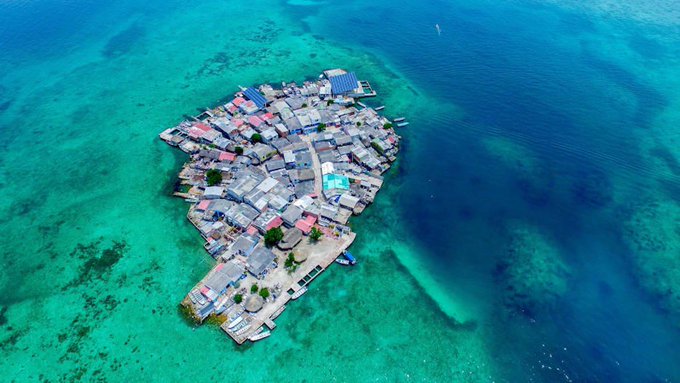
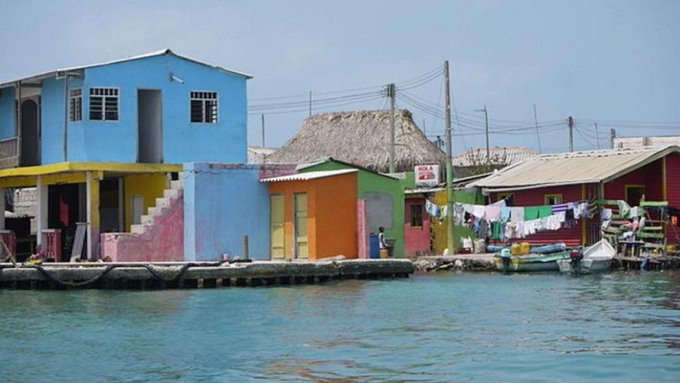
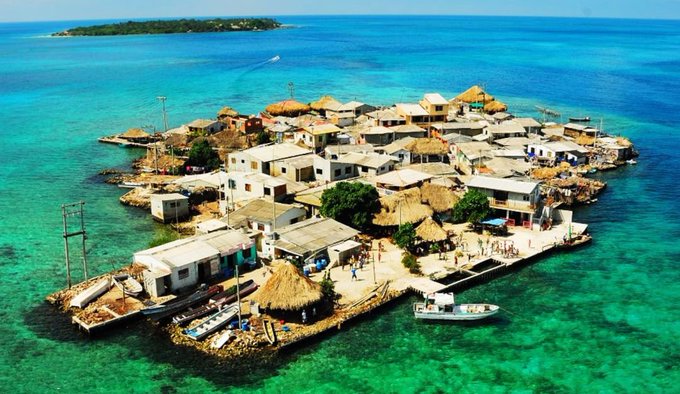
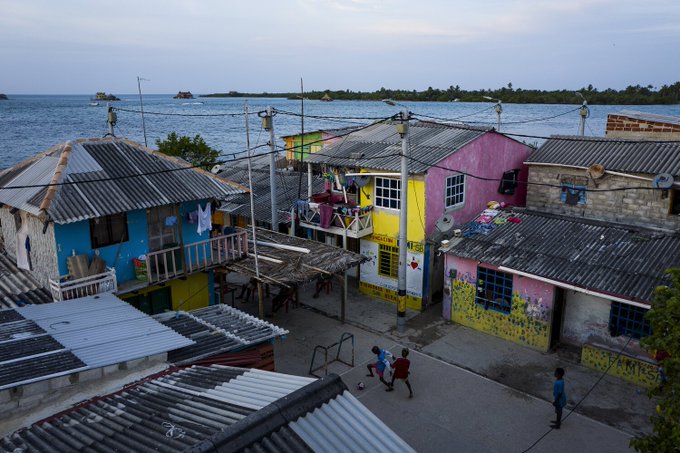
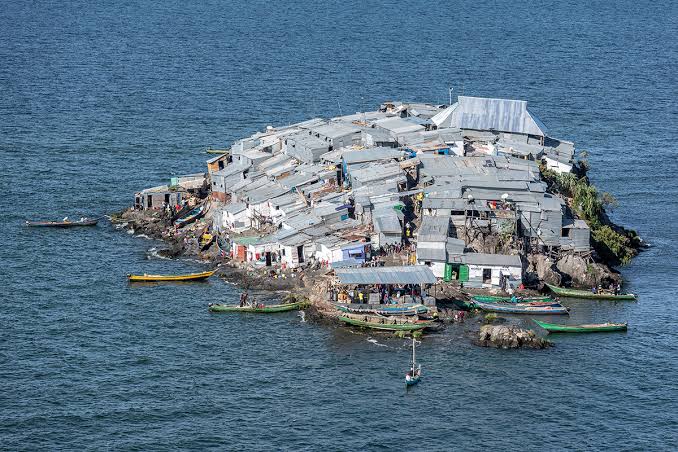



![Embarrassingly Dumb Ways People Died - Darwin Awards Winners [Part 12]](https://beamazed.b-cdn.net/dfhvoxjgb/image/upload/v1717909879/embarrassingly-dumb-ways-people-died-darwin-awards-winners-part-4/27CzoCbBYD6rZUyXGoOuXF.jpg?width=400)









